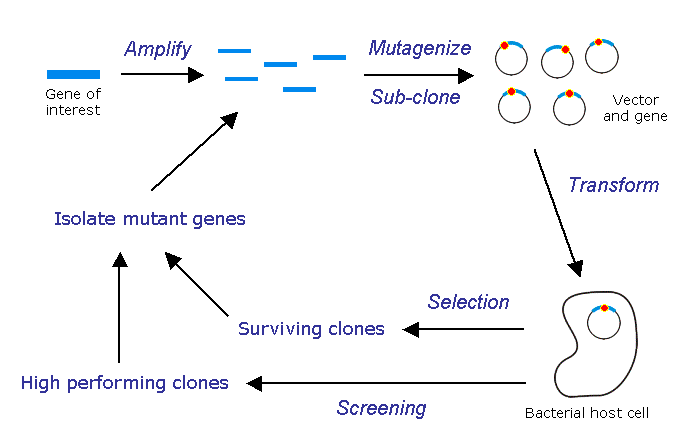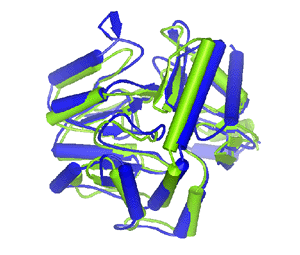
Directed Evolution is a general term used to describe various molecular biology techniques that mimic natural selection and are extremely useful for protein engineering. These techniques involve randomly introducing mutations at the genetic level followed by selection for the desired characteristics at the protein level. Such techniques include chemical mutagenesis, error-prone PCR, incremental truncation, and gene shuffling, to name but a few. The development of such directed evolution stemmed from the observation that new protein characteristics often arise from non-obvious mutations. Consequently rational engineering methods, such as site-directed mutagenesis, are of limited use for protein evolution. There are many examples of protein evolution successes in the literature (an excellent review of these examples is available by Susanne Brakmann, ChemBiochem 2001, 2, 865-871).


Due to the similarity between various PLP-dependent enzymes in their DNA sequence, protein structure, and functionality, directed evolution can be employed to "transfer" certain characteristics from one enzyme to another. Our lab uses a variety of directed evolution techniques to accomplish this. Gene shuffling (considered to be the standard method for directed evolution) is our mainstay method, although error-prone PCR and chemical mutagenesis are also being explored with various aminotransferases.